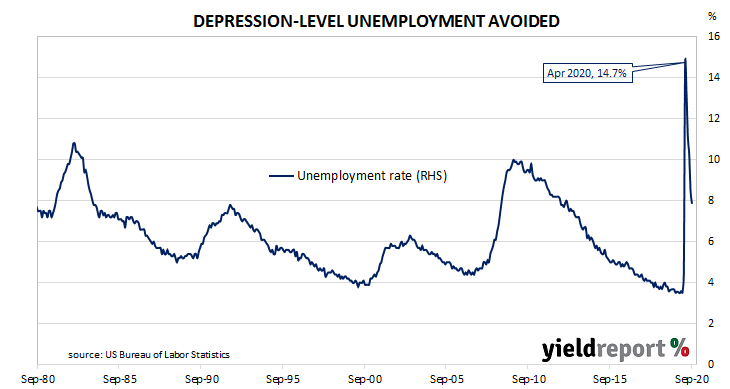Summary: September non-farm payrolls increase by over 650,000; jobless rate down considerably but aided by lower participation rate; still 11 million below Feb 2020 level; employment-to-population ratio up for fifth consecutive month; underemployment rate down again but still in low-teens.
The US economy ceased producing jobs in net terms as infection controls began to be implemented in March. The unemployment rate had been around 3.5% but that changed as job losses began to surge through March and April. May’s non-farm employment report represented a turning point and subsequent months have continued to provide substantial employment gains.
According to the US Bureau of Labor Statistics, the US economy created an additional 0.661 million jobs in the non-farm sector in September. The increase was noticeably below the 0.865 million which had been generally expected and less than the 1.489 million jobs which had been added in August after revisions. However, employment figures for July and August were revised up by a total of 145,000.
The unemployment rate dropped from August’s rate of 8.4% to 7.9%. The total number of unemployed decreased by 0.970 million to 12.580 million while the total number of people who are either employed or looking for work decreased by 695,000 to 160.143 million. The fall in the number of people in the labour force reduced the participation rate from August’s rate of 61.7% to 61.4%.
“Last month, there were more jobs in leisure and hospitality, retail and healthcare and social assistance. However, employment in local and state government education fell. There were still nearly 11 million fewer non-farm payroll jobs than before the crisis broke,” said ANZ senior economist Cherelle Murphy.

